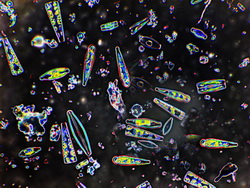Phytoplankton and nutrient levels in the Baltic Sea
The eutrophication of rivers that feed into the Baltic Sea and other types of human intervention have significantly reduced the amount of dissolved silicate (DSi) reaching the sea. This in turn has impacted the coastal and marine ecosystems, especially organisms like phytoplankton that rely on DSi as a basic nutrient. A group of local research institutes set out to provide the relevant authorities with the knowledge necessary to promote sustainability. An essential step involved gathering data to establish baseline conditions for the Baltic Sea, a natural resource of significant value to the region. The investigation was led by the Baltic Sea Research Institute in the context of the SIBER project. Samples were collected from a number of different locations in the Baltic Sea. The analysis culminated in the creation of a database of phytoplankton composition, with an emphasis on diatoms, for the period 1979 to 2005 and a database of nutrient concentrations, including DSi, covering the entire 20th century. The approach employed by the SIBER research consortium was consistent with the requirements of the Water Framework Directive, an important piece of legislation aiming to protect water quality. The databases will be made available to the relevant authorities to assist policy-making at both national and European levels.







